Meet us at

on 3rd & 4th October







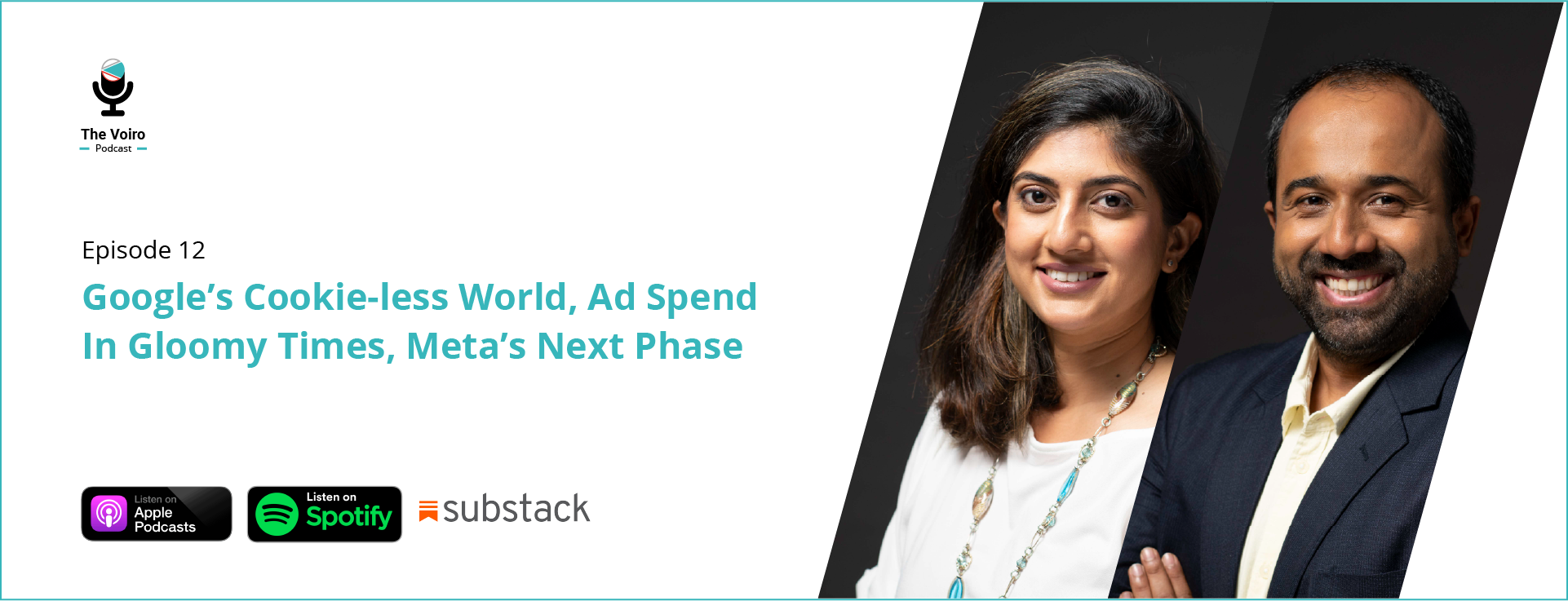
Listen to this episode on:
🎧 Apple Podcast: https://apple.co/3zRtZ5D
🎧 Spotify: https://spoti.fi/3JhEZMt
As Evan Shapiro said, “The Impression Recession Has Begun.”
Tech firms like Microsoft, SNAP, Google, YouTube and Amazon have all reported less than favourable results this quarter. And now Meta has reported its first ever QoQ revenue drop.” So much so that Meta CEO Mark Zuckerberg has announced possible job cuts. “Many teams are going to shrink so that we can shift energy to other areas inside the company,” he said in Meta’s earnings call.
Advertising has famously been a barometer of how an economy is doing. If you are on an upswing, people buy more, and brand spending increases. When heading towards a slump, the trend is reversed.
In this week’s podcast, Kavita Shenoy and Anand Gopal take a look at the various indicators of the impending recession and what it means for brands and tech firms.
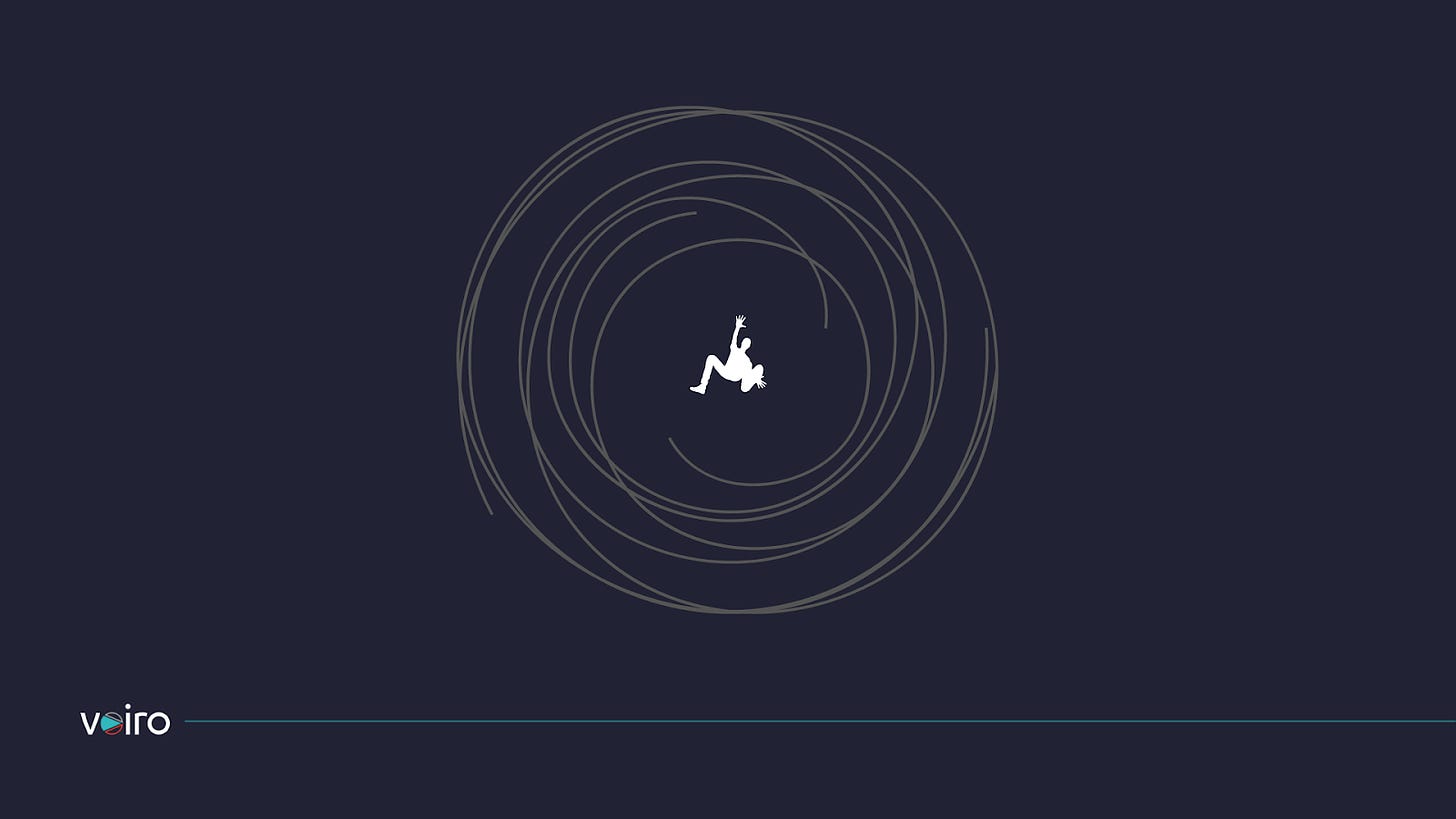
The Voiro View
The tough times have already begun amidst talk about a possible recession. We waited for the other shoe to drop during the pandemic, but we saw a lot of the previous momentum carry us through. But now it’s slowing down.
There are various ways to explain it, as there have been multiple parameters. Apparently, this week, Google’s and YouTube’s earnings call had the word ‘uncertainty’ coded 13 times. So, every time they talked about what happened, they said we are dealing with a lot of uncertainty.
Ben Thompson from STRATECHERY broke down every one of these earnings reports and said Meta CPMs or ad rates are down 14%. In contrast, last year, around the same time, it was up 47%, which, in his opinion, is not bad because advertising always lags consumer behaviour. While you can look at this trend separately, Reels is up 30% in terms of time spent, which means that the consumers are going there. Sandeep Bhushan, Director, Meta Business Group India, said, “Ad spend will go where consumers already are, and consumers are already in some version of the Metaverse.”
However, not all is lost. People and companies are making concerted efforts to mitigate the impact of a downturn. The big question, of course, is what does this mean in terms of the impact on the flow of ad dollars? Is it going to be more or less? Is it going to flow differently and skew in a certain direction because of prudence or panic? We will have to see.
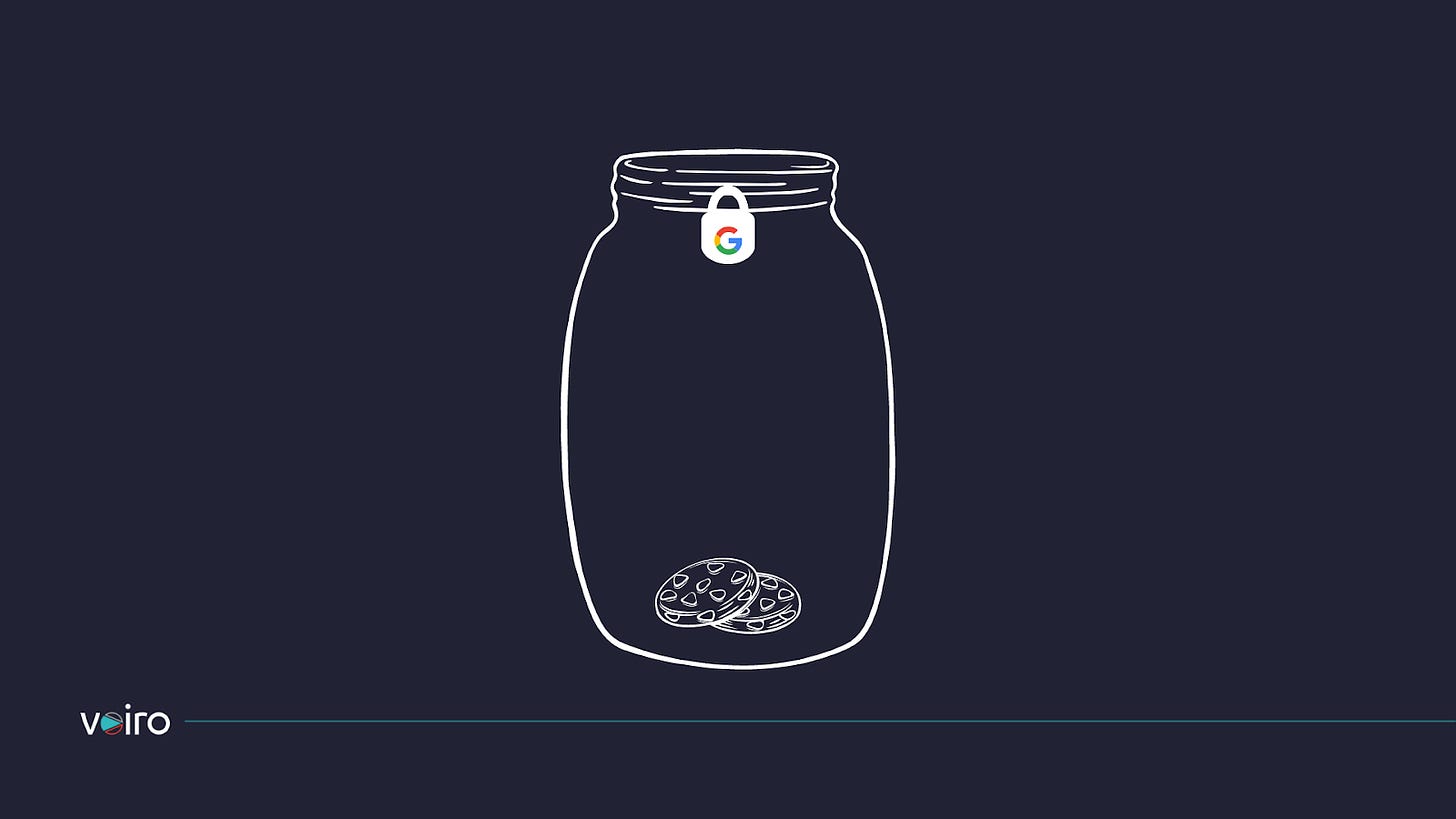
Google has, once again, delayed its plans to phase out third-party cookies and aims to do so by the “second half of 2024”. This is not the first time the tech giant reneged on its promise of depreciating cookies. The company had previously committed to phasing out cookies by 2022 and then by the second half of 2023.
The Voiro View
It is Google’s world and we all live in it. Everywhere we go, there is a touchpoint Google offers for a consumer to get from point A to point B. With Google delaying its move away from deprecating cookies and Chrome, publishers get more time to prepare. However, the narrative of moving this deprecation year over year can be a bit of a PR problem for the company.
Along with this announcement, they have also launched a revenue verification report through Google Ad Manager, called Confirming Gross Revenue, which allows publishers and buyers to measure revenue leaks. So, they’re trying to make their revenue data more transparent. However, the 2024 deadline may not hold, but we will all have to wait and see.
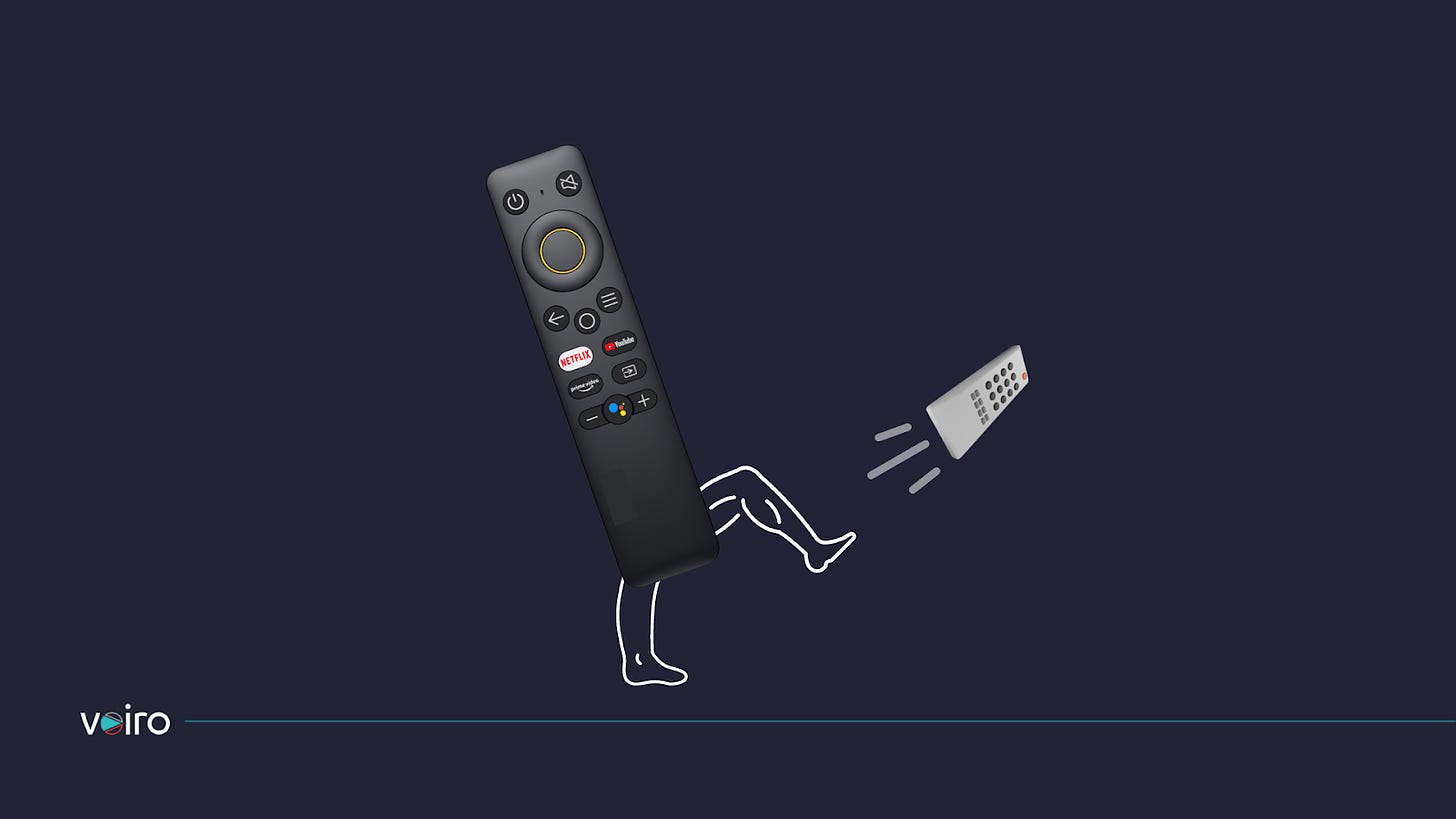
There is a definite shift of linear TV ad dollars to CTV. This avenue is probably the only way to address households that are technically off cable TV. In addition, the type of targeting and measurement that CTV offers on the biggest screen at home is a huge plus in moving away from linear ads. The podcast explores the rising popularity of CTV advertising and what measurement metrics matter most.
The Voiro View
CTV advertising, at the end of the day, is the ability to target the largest screen in a household. That statement envelopes everything that we need to know about why CTV is so important. For all practical purposes, delivery is through the Internet and publishers can target this household based on several parameters that are not available in linear television. To top it all, television is the center of a home, where people congregate. Therefore, the audience for whatever product you’re projecting onto that screen will be that much more significant. It’s not linear television, but it’s still highly addressable. The only question is about measurement. But that will soon become an area of focus because that’s where everybody’s attention is right now.
In his interview with the New York Times, Mark Zuckerberg talked about his big push with Meta and how everyone has to come into the office and work twice as hard because the greatest differentiator for Facebook has always been a social graph. And in his opinion, the only thing that will keep Facebook going in line with all that is happening is agility and speed.
Eugene Wei (former head of product at Hulu, Flipboard, and video at Oculus), in conversation with host Sonal Choksi, talks about TikTok’s algorithmically-driven product and what the future of the creator economy looks like.
© 2024 Voiro. All rights reserved
